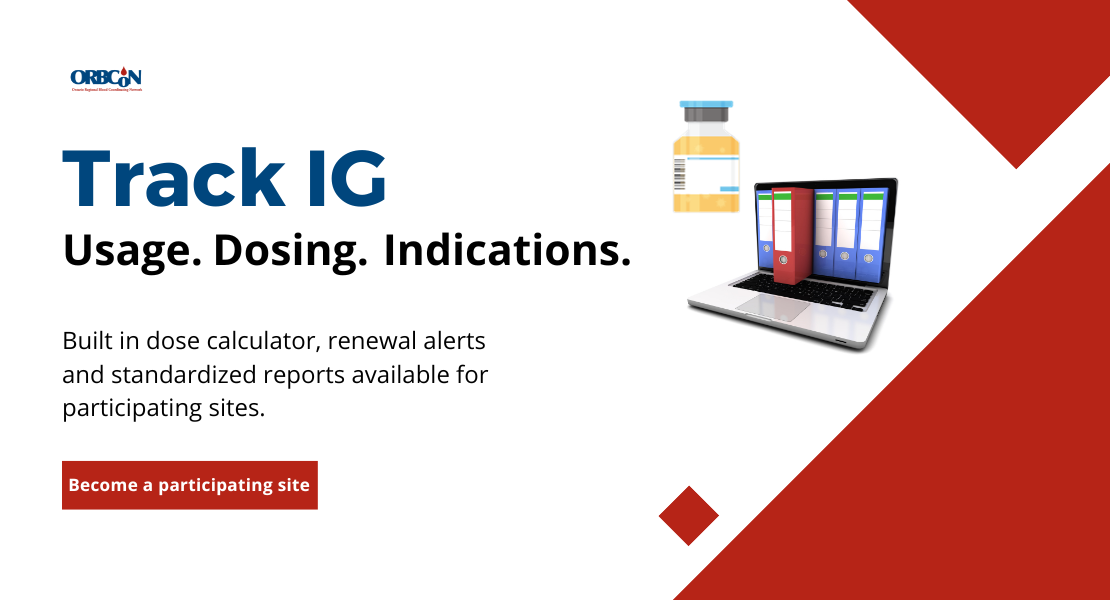Get the full content
DownloadIn instances when longer term or repeat treatment is required, continued use of IG should be based on objective measures of effectiveness established at the outset of treatment. These measures should be assessed no later than 6 months after initiation of long-term treatment and at least annually thereafter. If clinical effectiveness has not been achieved or sustained, IG should be discontinued.
In instances when longer term or repeat treatment is required, continued use of IG should be based on objective measures of effectiveness established at the outset of treatment. These measures should be assessed no later than 6 months after initiation of treatment and at least annually thereafter. If clinical effectiveness has not been achieved, IG should be discontinued.
Hematopoietic stem cell transplant (HSCT), allogeneic, Cytomegalovirus (CMV)-induced pneumonitis
H7-HCST
Vaccine induced immune thrombotic thrombocytopenia (VITT) / vaccine induced prothrombotic immune thrombocytopenia (VIPIT)
H13-VITT
Aim to use the dose that achieves a significant reduction in the number of infections. SCIG and IVIG are equally effective. Continued use of IG should be based on objective measures of effectiveness established at the outset of treatment. These measures should be assessed no later than 6 months after initiation of treatment and at least annually thereafter by a physician with recognized expertise in immunodeficiency disorders.
In instances when longer term treatment is required, continued use of IG should be based on objective measures of effectiveness established at the outset of treatment. These measures should be assessed no later than 6 months after initiation of treatment and at least annually thereafter. If clinical effectiveness has not been achieved, IG should be discontinued.
Autoimmune encephalitis mediated by antibodies (AMAE) targeting cell-surface antigens
N2-AMAE
Multiple Sclerosis (MS) – Relapsing remitting multiple sclerosis (RRMS), short-term therapy
Myelin Oligodendrocyte Glycoprotein antibody-associated disorders (MOGAD) – pediatric
N9-MOGAD
Pediatric Autoimmune Neuropsychiatric Disorders Associated with Streptococcal Infections (PANDAS)
N16- PANDAS
Polyneuropathy, organomegaly, endocrinopathy, monoclonal protein, skin changes (POEMS) syndrome
Vasculitic neuropathy as part of a systemic disorder (systemic vasculitis affecting the peripheral nervous system)
N15-VN
In instances when longer term treatment is required, continued use of IG should be based on objective measures of effectiveness established at the outset of treatment. These measures should be assessed no later than 6 months after initiation of treatment (unless specifically indicated) and at least annually thereafter. If clinical effectiveness has not been achieved, IG should be discontinued.
Juvenile Idiopathic Inflammatory Myopathy (J-IIM)(Previously Juvenile Dermatomyositis)
R5-JIIM
Multisystem inflammatory syndrome in children (MIS-C) associated with SARS-CoV-2/COVID-19 infection
R8-MISC
In instances when longer term treatment is required, continued use of IG should be based on objective measures of effectiveness established at the outset of treatment. These measures should be assessed no later than 6 months after initiation of treatment (unless specifically indicated) and at least annually thereafter. If clinical effectiveness has not been achieved, IG should be discontinued.
Community-acquired respiratory virus (CARV), upper respiratory tract infection (URTI) in high-risk patients
T1-CARV/URTI
Solid organ transplant, active antibody-mediated rejection (ABMR) prevention and management
T3-ABMR
Solid organ transplant, ongoing desensitization, prevention or treatment of graft rejection
T4-DGR
In instances when longer term treatment is required, continued use of IG should be based on objective measures of effectiveness established at the outset of treatment. These measures should be assessed no later than 6 months after initiation of treatment (unless specifically indicated) and at least annually thereafter. If clinical effectiveness has not been achieved, IG should be discontinued.

